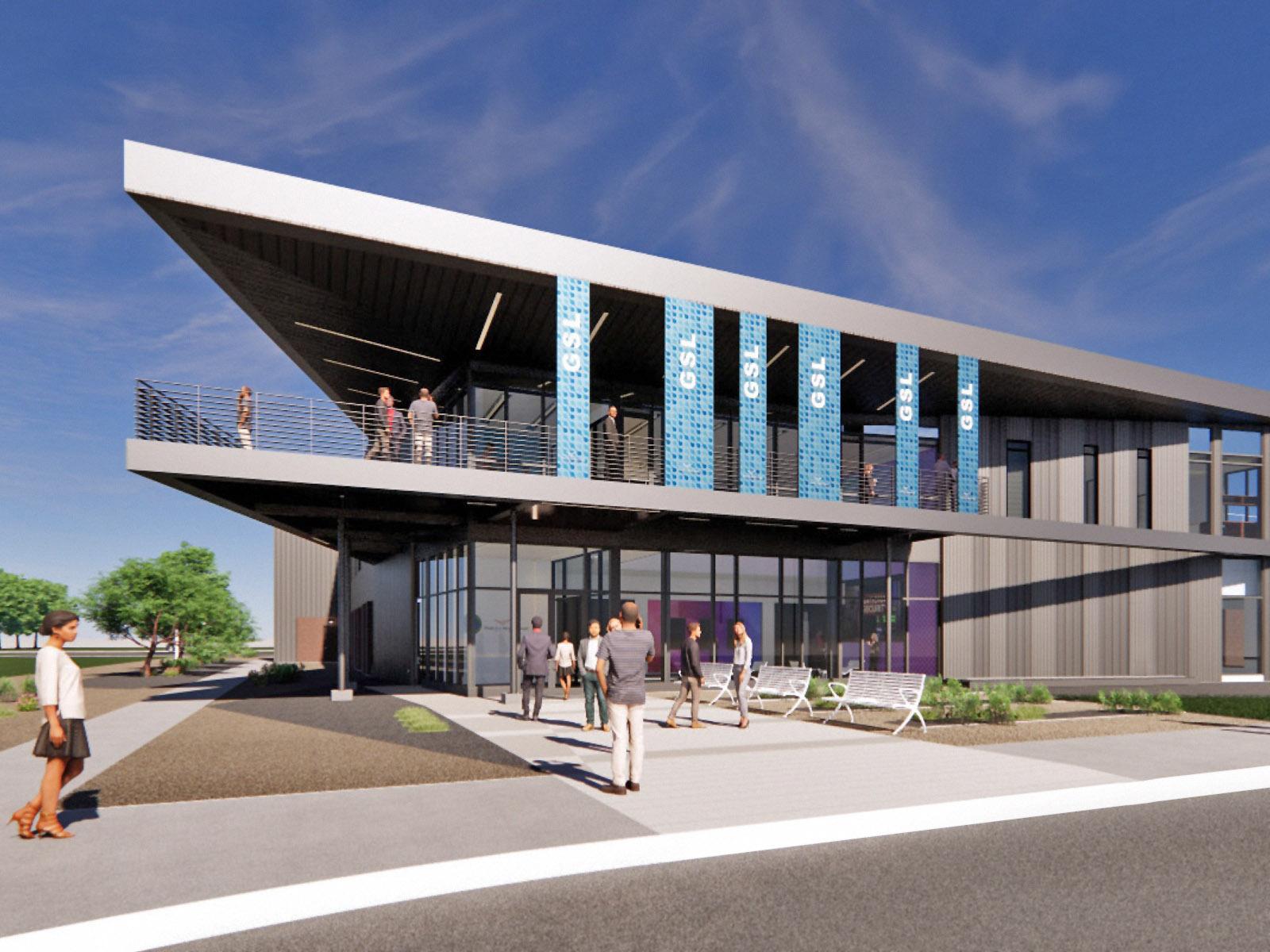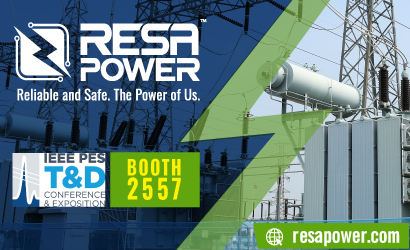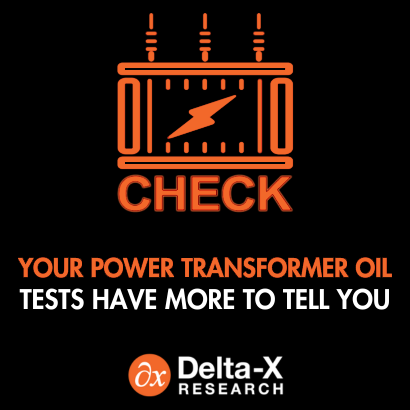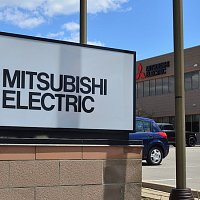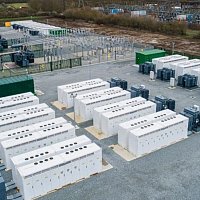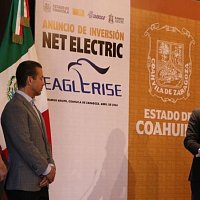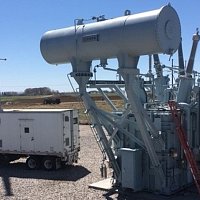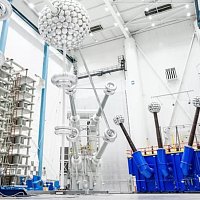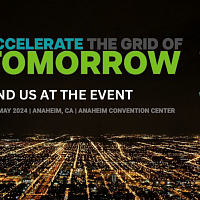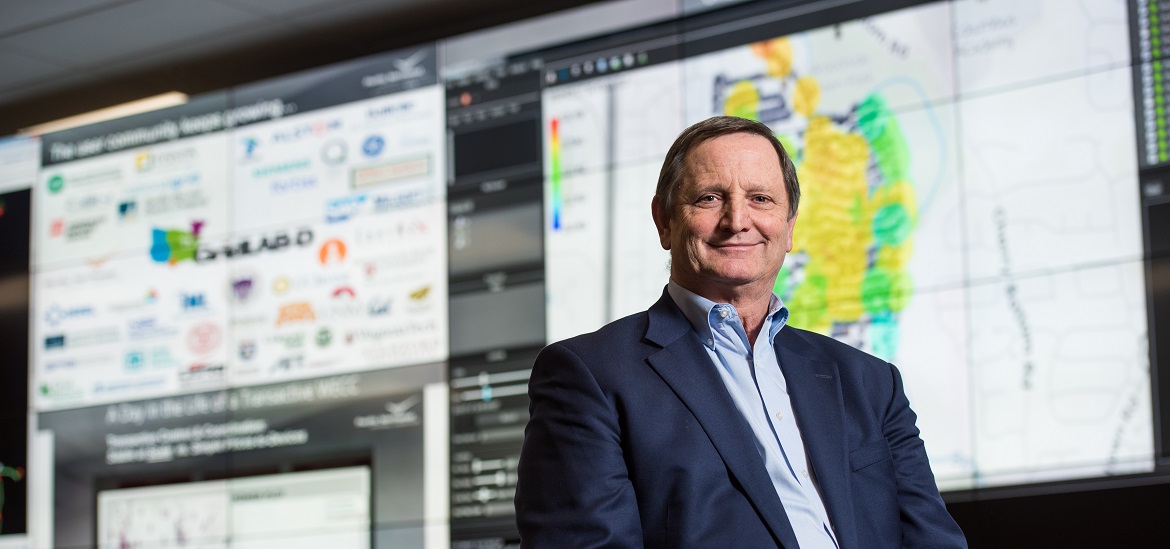
Photo Credit: Pacific Northwest National Laboratory
Interview with CARL IMHOFF
Manager, Electricity Market Sector at Battelle Pacific Northwest National Laboratory
FEATURE INTERVIEW
Collaboration is increasingly fundamental to everything that we do. One thing I found is that the utility industry is not the most agile one in terms of picking up new technology, and one of the key success factors is to work closely with the vendors.
Alan Ross
My guest is Carl Imhoff. He is the manager I would consider the future of the power grid right at the Pacific Northwest National Laboratories up in the northwest of the United States. Carl, thank you for joining me.
Carl Imhoff
My pleasure.
AR
Tell me a little bit about your background and how you ended up at PNNL. How did you end up there and why the power industry?
CI
I got my master's degree at Purdue University in industrial engineering with an emphasis on operations research. I did my research on some Department of Energy work looking at electric vehicles. That was back in 1980. As I was presenting my work in Washington, DC, the Department of Energy, afterwards it was my birthday, they took me to an Irish bar just across the street. There happened to be a gentleman there who worked at PNNL. He slipped his business card across the table and said, well, if you're interviewing, come visit us. I'd never heard of a national laboratory. I came to the Pacific Northwest and fell in love with the ability to work on both technical issues around the energy system, but also sort of policy challenges; at that time, it focused more on energy efficiency and solving the oil crisis, that kind of thing. So that sort of got me into a place at the nexus of technology and energy policy. I've been here ever since.
AR
Excellent. I'm glad you did because we are now at, I think some of the most exciting times as it relates to the power industry as a whole. There's more change now than I've seen in my lifetime. It was the old step-down grid. Just make sure rates are low and customers are happy and don't let the generating stop. You’ve seen a lot of change, even though I think we've been pretty static within the utility industry. Within the power industry and your time there, what are the most important changes that you see taking place today?
CI
I believe the journey started in the late 90s, when the inexpensive natural gas began to flood the market. That transition to natural gas really transformed the power industry. We saw a big drop in coal generation, a lot of very high-performance, agile gas turbine fleets sprang up, and that really changed the price structure and everything else. Big shift in the power system followed very quickly caused by digitization in the early two-thousands in terms of protection, control, and situational awareness. The emergence of the phaser measurement technologies that let operators see the system like never before was an incredible transformative activity in terms of running the system as we have come to know it, and led to smart grid activities. And then, all that has just been dwarfed by the challenge we faced with the climate extremes we've experienced in terms of hurricanes and other issues, big push in terms of decarbonization. What we see today is a complete transformation driven by decarbonization that's at the center of state policy and individual corporate policies, as well as the federal agenda.
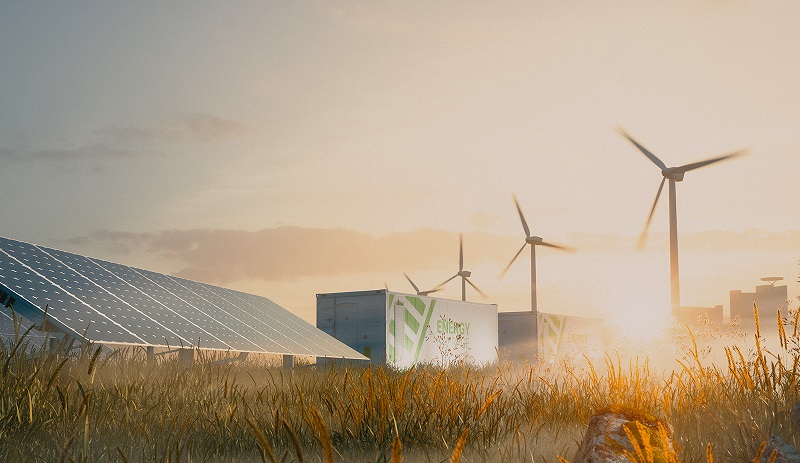
AR
You mentioned electrification of transportation in 1980. We're finally doing something about it, right?
I believe PNNL is a leading laboratory in the US. Could it be said that you are coordinating between some of the other labs as well?
CI
Well, we're a leader, we're one of the leading laboratories and we do co-lead Grid Modernization Laboratory Consortium for DOE.
AR
I'm on the IEE PES steering committee for Grid Edge and their recent conference that they had in San Diego. When we first got there, we were trying to define grid edge. These are the three main terms: grid edge, grid modernization, and smart grid. What R&D efforts are going on at PNNL right now that we need to know about?
CI
A couple of things jump out. Alan. I think one is that the journey towards decarbonization is going to require the capture of system flexibility at levels never before seen. That's the ability to increment and decrement both generation and load, to handle sort of the real time needs of the system. We used to all do it on the generation side, we're going to have to capture anywhere we can get it. You're going to have to find ways to coordinate and orchestrate generation and demand in ways that we've never had to do before. We're working on some advanced concepts, transactive energy concepts, such that you can engage demand at scale, at the interconnection scale, hundreds of thousands of devices, et cetera. That's a really big push for ourselves. The other issue is, as we look ahead to some increased levels of renewable generation in the future, whether it's 80 or 60% or whatever, we're going to have substantial growth in the use of inverter-based resources and power electronics and incredibly fast agile devices. But we're a little uncoordinated in terms of the standards and how we want to move in that direction.
We are going to have to come up with new approaches for controlling those devices and ensuring protection of the system as we move towards a high inverter-based resource fraction in the industry. That's an area where we're trying to do some analytics around what needs to change, how we adjust the standards and the ability to protect and control those future systems. Another area is the challenges of threats. Cybersecurity has become really big in the last decade. That's sort of a human-posed threat I mentioned earlier, the weather extremes and the big heat domes we've had on the West Coast the last several years are really transforming demand. Peak demands in California and the Pacific Northwest and all hurricane damages are much more intense than they had been previously. We need to have a way to better reflect the increasingly complex threat profiles that not only today's system has to face, but tomorrow's system as well. If we electrify and become more dependent on electricity, less dependent on natural gas, then that's going to change the dynamics and we need to assure that we not only decarbonize, but also keep it resilient and keep it robust.
The journey towards decarbonization is going to require the capture of system flexibility at levels never before seen.
AR
Resilient, robust, reliable, those are the three R's that I like to talk about.
One of our community members wrote an article saying that, because of this inverter-based system that's being installed, there's an increased degradation of distribution transformers already hooked up to the grid. Have you heard anything about that? The inverter-based system ages existing assets more rapidly than they have in the past.
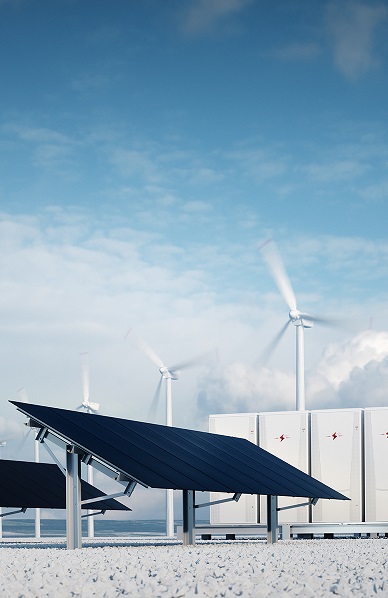
CI
I've heard that discussed. I've not seen a broad base of evidence yet. I think it's worth examining, and I think that points to where industry and probably the Federal Government need to work a little bit in terms of what are the right test beds for validating the controllability of these fleets of devices, some of the degradation and wear issues, how vulnerable might they be to various cyber or digital attacks, those sorts of things. What improvements do we need to make in secure design of these new digital devices? From a supply chain standpoint, I think there's just a lot of kind of question marks there that we don't quite understand yet that give us some rich topics to investigate in the near term.
AR
I hope PNNL does some investigating on it, because here's the problem. If the existing assets are degrading faster than planned, and the lead time on transformers, distribution transformers, it used to be three to six months, is now two years, up to three years, you have a double whammy.
You mentioned cybersecurity. We all talk about it. You hear it over and over again. The issue of cybersecurity, it's not really one issue, right? There's multitude of issues. What are you all working on? What threats are we really trying to mitigate?
CI
There are two main domains. We're looking both at the interface between the electric system of the utilities and the outer internet world, sort of the business side of those activities. And they're the challenge. It's the same threats we face on our home computers and everything else, just increasingly complex threat profiles from external entities. And I think the industry has done a phenomenal job of responding and adapting. But we have three and a half thousand utilities in this country. The large utilities with substantial engineering staffs put a lot of emphasis on this and doing a great job. The challenges are much greater for the small and mid-sized utilities who might have two or three engineers on their staff. We're working to give them tools for them to self assess the level of maturity for their cyber readiness, identify where there are some gaps. We're also working with workforce development, with the colleges and community colleges and universities around the country to increase the flow of knowledgeable cybersecurity analysts as well as double leap power engineers who have some exposure to cybersecurity tools to help infuse in that supply chain, the workforce of the future to help better mitigate those issues.
The other side of that equation is on the control side, sort of inside the utility, the control systems or the OT systems, a very different environment, but still very important. We're developing new techniques to help monitor and control some of the really fast streams of SCADA and Phasor measurement data and other things, using some automated analytics to improve our ability to detect threats, position, and help resist those threats going into the future. It's sort of in those two domains, the IT side and the OT side. New tools, new workforce giving smaller and mid sized utilities the tools they need to keep up with the race.
AR
I think I feel better about the future of the power grid with organizations like you and some of our other national labs working on it, because it is a daunting task to come up with something that works at scale for the larger utilities who can afford it, and down to the small, because most of the problems will affect all of them. If I were attacking the grid, I would attack at the weakest point, which is many times going to be the lower level of the grid, because then you can get into it. You create all kinds of problems from there. The last question that is really more of a philosophical one: collaboration is critical in every major endeavor. It can't be done in a silo. Collaboration is absolutely critical to what happens with the future of the grid. We have a very disconnected grid in the US. Talk a little bit about how PNNL handles collaboration.
CI
Collaboration is increasingly fundamental to everything that we do. The majority of our programs for Department of Energy all have industry participants or partners. We have industry advisory groups so that even if they aren't participating in a funding way, they can come in and have full transparency in terms of the progress of research projects. We have annual peer reviews and headquarters when we work with EPRI and EEI and the large public power council and others to bring them in to make sure they're infused with what the possibilities are, as well as the vendor community. I think one thing I found is that the utility industry is not the most agile one in terms of picking up new technology, and one of the key success factors is to work closely with the vendors. As they are seeing the emergence of new high-performance techniques, or new situational awareness techniques, and so on, I have them in the room with the utility participants, so they all hear together about what the possibilities might be. One of the most successful moments in a control room demonstration of a new advanced technique is when an operator turns around and says to the vice president, it'd be great if this were to be part of our next upgrade on our EMS system or our DMS system.
